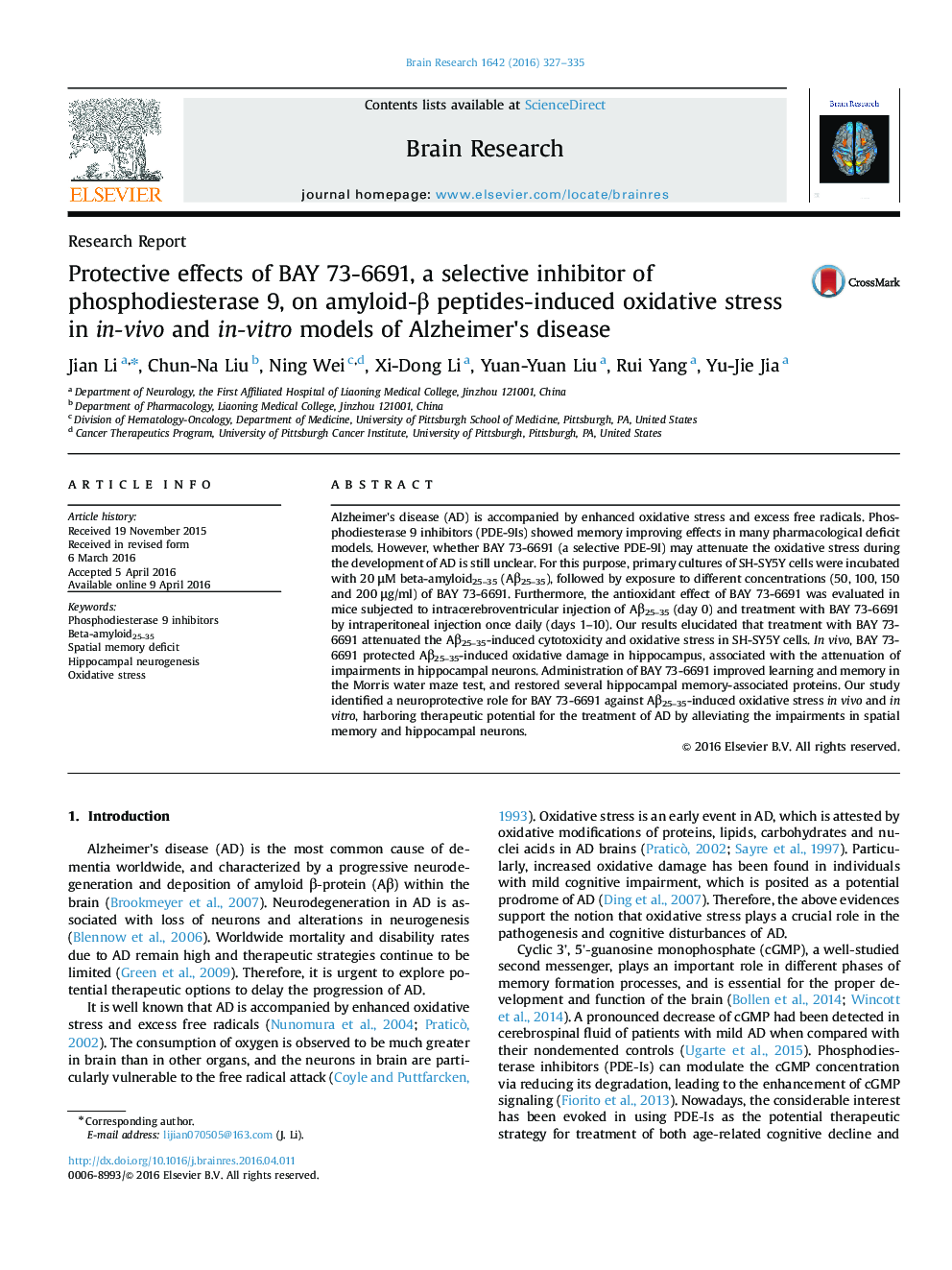| Article ID | Journal | Published Year | Pages | File Type |
|---|---|---|---|---|
| 4323553 | Brain Research | 2016 | 9 Pages |
•BAY 73-6691 attenuated the amyloid-β peptides-induced oxidative stress in vivo and in vitro.•BAY 73-6691 protected against Aβ25–35-induced neurotoxicity in SH-SY5Y cells.•BAY 73-6691 significantly improved Aβ25–35-induced spatial memory deficits.•BAY 73-6691 significantly improved Aβ25–35-induced impairments in hippocampal neurons.
Alzheimer's disease (AD) is accompanied by enhanced oxidative stress and excess free radicals. Phosphodiesterase 9 inhibitors (PDE-9Is) showed memory improving effects in many pharmacological deficit models. However, whether BAY 73-6691 (a selective PDE-9I) may attenuate the oxidative stress during the development of AD is still unclear. For this purpose, primary cultures of SH-SY5Y cells were incubated with 20 μM beta-amyloid25–35 (Aβ25–35), followed by exposure to different concentrations (50, 100, 150 and 200 μg/ml) of BAY 73-6691. Furthermore, the antioxidant effect of BAY 73-6691 was evaluated in mice subjected to intracerebroventricular injection of Aβ25–35 (day 0) and treatment with BAY 73-6691 by intraperitoneal injection once daily (days 1–10). Our results elucidated that treatment with BAY 73-6691 attenuated the Aβ25–35-induced cytotoxicity and oxidative stress in SH-SY5Y cells. In vivo, BAY 73-6691 protected Aβ25–35-induced oxidative damage in hippocampus, associated with the attenuation of impairments in hippocampal neurons. Administration of BAY 73-6691 improved learning and memory in the Morris water maze test, and restored several hippocampal memory-associated proteins. Our study identified a neuroprotective role for BAY 73-6691 against Aβ25–35-induced oxidative stress in vivo and in vitro, harboring therapeutic potential for the treatment of AD by alleviating the impairments in spatial memory and hippocampal neurons.
